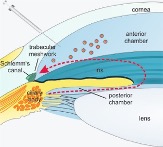CV
Scientific Career
- Since 2023: Co-Editor in Chief of the European Journal of Pharmaceutics and Biopharmaceutics
- Since 2013: Co-Editor of the European Journal of Pharmaceutics and Biopharmaceutics
- 2013: Habilitation in Pharmaceutical Technology, University Regensburg
- since 2012: Akademische Rätin at the Department of Pharmaceutical Technology, University Regensburg
- 2008 and 2009: Postdoctoral fellow at the Department of Chemical Engineering, Massachusettes Institute of Technology (Prof. Dr. Robert Langer)
- 2005 - 2012: Research associate at the Department of Pharmaceutical Technology, University Regensburg
- 2002 - 2005: Graduate student at the Department of Pharmaceutical Technology, University Regensburg (Prof. Dr. Achim Göpferich)
- 1996 - 2001: Undergraduate student at the Institute of Pharmacy, Ruprecht-Karls-University Heidelberg
Publications
Publication List
The following list is a selection of all publications of apl. Prof. Dr. Miriam Breunig (articles, book chapters, theses and patents published 2008 and later). You can find the full publication list on the publication server of the University.
Publication list of apl. Prof. Dr. Miriam Breunig
Research
Nanoparticulate drug delivery systems for the treatment of primary open-angle glaucoma

Nanoparticle transport. Nanoparticles are injected into the anterior chamber of the eye and follow the natural aqueous humor outflow into the trabecular meshwork. (Figure taken from Dillinger et al. Small 2018, 14, 1803239, https://doi.org/10.1002/smll.201803239)
Primary open-angle glaucoma is a neurodegenerative disease of the optic nerve and one of the leading causes of blindness worldwide. Pathologic changes in the anterior chamber of the eye are critical in the development of primary open-angle glaucoma because aqueous humor outflow is obstructed by the trabecular meshwork and Schlemm's canal. Conventional treatment with eye drops does not bring the sweeping success due to an extremely low bioavailability after topical application. In addition, the applied active substances do not intervene at the root cause of the disease. We are developing nanoparticulate drug delivery systems that transport active substances to the site of action in the trabecular meshwork and Schlemm's canal after intracameral application. Furthermore, the applied drugs like small interfering RNA directly interfere with the pathomechanism of primary open angle glaucoma and do not only act on symptoms of the disease.
This project is a cooperation with Prof. Dr. Rudolf Fuchshofer (Chair of Human Anatomy and Embryology, University of Regensburg).
Nanoparticulate carrier systems for vaccines

Nanoparticle platform. Antigens immobilized in a repetitive manner on the surface of nanoparticles allow for multivalent interactions with immune cells. (Figure from Thalhauser et al. J Control Release 2020, 317, 322, doi.org/10.1016/j.jconrel.2019.11.035).
The development of vaccines for the protection against infectious diseases is a global challenge. Antibodies represent one arm of the immune response and are essential for the effectiveness of vaccines. After an antigen has bound to receptors on the surface of B cells the adaptive immune response is triggered. Antigens that are arranged in a repetitive manner activate B cell response more efficiently than monovalent, soluble antigens. Therefore, we are developing nanoparticles with antigens immobilized on their surface. This enables multivalent interaction with B cells and improves the immune response.
This project is a cooperation with Prof. Dr. Ralf Wagner (Molecular Microbiology (Virology, University Hospital Regensburg).




